The URL for this page is
Victory 35 Sailing Catamaran Added 08-Jun-2024
|
 | © 2001-2024 ./) . . ./) . . |
 1985 Endeavour 35.5 Technical SpecsGeneral data about endeavour 35.5. | Brand | | | Model | | | Boat Type | | | Category | | | Year Of Production | | | Condition (New/Used) | | | Country | | | Fuel (Gas/Diesel) | | | Hull Material Used | | | Length | | | Selling Price | | | | | Engine and Power Specs | Engine manufacturer | | | Engine Location | | | Engine Location | | | Engine Hours | | | | | | Engine Horsepower | | | Engine Drive | | | Engine Built Year | | | Boat Propeller build | | | Boat Propeller | | Dimensions And Wieght | Main Sailing Vessel | | | LOA (Length Overall) | | | L.W.L(Length WaterLine) | | | Full Sail Area | | | Displacement (Weight) | | | Boat Maximum Draft | | | Boat Keel Type | | | Beam Width | | | Ballast System Weight | | Detailed Specifications | Waste Water Tank | | | Twin Berths | | | Numebr of Cabins | | | Number of Seats | | | Number of Heads (Watercraft) | | | Gas Tank Size | | | Drinking Water Tank | | | Anchor Windlass | | Features And EquipmentsSailing features. | Genoa | | Fully battened mainsail | Other Equipments | Last bottom paint in april 2021 | | 3 other sails come with the boat | Interior Specifications | Oven and cooktop | | Marine battery charger | | Combination microwave oven | | Automatic bilge pump | | Air conditioner | Exterior Features | Swim ladder | | Mainsail cover | | Deck shower | | Cockpit cushions | Electronical And Electrical Info | Vhf radio | | Tv & entertainment system | | Shore power socket | | Radio and sterio receiver | | Marine wind instruments | | Marine receiver and cd player | | Marine gps | | Inverter charger | | Depth sounder instrument | | Chartplotter system | | Autopilot system | Deck HardwareEndeavour 35.5 - Endeavour provided us with the latest version of its 35.5 service repair manual
- Find All mechanical and electrical parts and accessories of Endeavour 35.5 Sail here
Endeavour 35.5 competitors You are in desktop mode instead of your device's default layout.- FightCenter #
- M-1 Challenge 11 M-1 Challenge 11
- Samoilov vs. Jones Samoilov vs. Jones
 Fighter Comparison | Jones | | | | Samoilov | | 11-5-0 | | Pro Record At Fight | Pro
Record | | 6-2-1 | | Climbed to 12-5 | | Record After Fight | | Fell to 6-3-1 | | Netherlands Netherlands | | | | Russia Russia | | | | | | | | 27 years, 5 months, 3 weeks | 27
+5 mos, 3 wks | | Age at Fight | | 24 years, 2 months, 3 weeks, 4 days | 24
+2 mos, 3 wks, 4 days | | | | Height | | | | | | Gym | | | Bout InformationDmitriy samoilov vs. jason jones, event poster.  Fight Details- Event: M-1 Challenge 11: Holland
- Date: Sunday 01.11.2009
- Venue: Sports Centrum
- Enclosure: Ring
- Location: Amstelveen, Holland
- Bout Billing: Main Card (fight 7 of 9)
- Pro/Am: Professional
- Weight: 185 lbs (84.0 kg)
- Samoilov Total Disclosed Pay: Samoilov Disclosed Pay: None Disclosed
- Jones Total Disclosed Pay: Jones Disclosed Pay: None Disclosed
 Event DiscussionThere is no official forum thread for this event. Regional rankings, schedule & news  Claim your page • All the biggest upcoming MMA & Boxing fights • Create a free Tapology account to play • Rank fighters & bouts in each division • Create a free Tapology account to begin | All-Time Greatest Submissions | | | 1 | Anderson Silva vs. Chael Sonnen | | 2 | Demetrious Johnson vs. Ray Borg | | 3 | Jon Jones vs. Lyoto Machida | | 4 | Leonard Garcia vs. Chan Sung Jung II | | 5 | Nick Diaz vs. Takanori Gomi | | 6 | Fedor Emelianenko vs. Fabrício Werdum | | 7 | Frank Mir vs. Antônio Rodrigo Nogueira II | | 8 | Frank Mir vs. Brock Lesnar I | Create an account and see fewer ads on Tapology. • Update Fight Cards, Fighter Bios, Gym Info. • Get Website Support, Advertising, Other inquiries. Samoilov vs. Jones Submit a dispute for this result of this fight. Sansiri PK Saenchai is 34 today! - MMA Junkie : UFC 308 weigh-in results, live video stream (1 a.m. ET)
- MMA Mania : Best Boxer In UFC?
- UFC.com : Weigh-In Results | UFC 308: Topuria vs Holloway
- MMA Mania : ‘Poatan’ In Talks To Make Acting Debut In Horror Movie
- Bad Left Hook : ‘It’s a sinking ship’: De La Hoya says Tim Tszyu loss a result of poor PBC matchmaking
- MMAFighting.com : UFC 308 weigh-in video at 1 a.m. ET
- Bad Left Hook : Devin Haney picking Prograis to upset Catterall
- MMA Mania : Dana Goes Full Will Smith, Power Slap’s PFL’s Numbers
- Bad Left Hook : Janibek vs Sheeraz mandatory negotiations extended
- MMAFighting.com : UFC champ Alex Pereira cast as villain in upcoming action thriller ‘Onslaught’ from Adam Wingard
- Bad Left Hook : ‘Zepeda will not make it to Shakur’: Tevin Farmer on ‘do-or-die’ fight
- MMA Mania : ‘I Was Going To Cut Francis When He Lost Two In A Row’
- MMA Junkie : Franco Tenaglia reflects on insane war in BKFC lightweight title win: 'This was better than 'Rocky''
- Bad Left Hook : Gervonta Davis vs Lamont Roach fight could be postponed
- MMAFighting.com : Dana White goes scorched earth on Donn Davis: ‘The PFL should keep the UFC out of their mouth’
- MMA Mania : Khamzat F-Bombs Aussie Chicken Reporter
- MMA Junkie : UFC 308 'Embedded,' No. 4: 'You all know what el matador does with the bull'
- MMA Junkie : Dana White says he wanted to cut Francis Ngannou from UFC in 2018 but was 'begged' not to
- MMAFighting.com : UFC owners at TKO Group Holdings acquire new assets from Endeavor in $3.25 billion deal
- MMA Mania : Dana White (Kind Of) Gives Random Undefeated Fighter A UFC Contact During Press Conference
Tapology Team · Contact Us · Add Results · FAQ · Terms of Use · Privacy Tapology Team · Contact Us · Add Results FAQ · Terms of Use · Privacy Facebook · Twitter · Instagram © 2024 Tapology.  - Visit Our Blog about Russia to know more about Russian sights, history
- Check out our Russian cities and regions guides
- Follow us on Twitter and Facebook to better understand Russia
- Info about getting Russian visa , the main airports , how to rent an apartment
- Our Expert answers your questions about Russia, some tips about sending flowers
 Russian regions- Bashkortostan republic
- Chuvashia republic
- Kirov oblast
- Mari El republic
- Mordovia republic
- Nizhegorodskaya oblast
- Orenburg oblast
- Penza oblast
- Samara oblast
- Saratov oblast
- Tatarstan republic
- Udmurt republic
- Ulyanovsk oblast
- Map of Russia
- All cities and regions
- Blog about Russia
- News from Russia
- How to get a visa
- Flights to Russia
- Russian hotels
- Renting apartments
- Russian currency
- FIFA World Cup 2018
- Submit an article
- Flowers to Russia
- Ask our Expert
The Mari El Republic, RussiaThe capital city of Mari El republic: Yoshkar-Ola . The Mari El Republic - OverviewThe Republic of Mari El is a federal subject of Russia located in the east of the European part of the country, in the Volga Federal District. Yoshkar-Ola is the capital city of the region. The population of Mari El is about 671,400 (2022), the area - 23,375 sq. km. Mari El republic flagMari el republic coat of arms.  Mari El republic anthemMari el republic map, russia, mari el republic latest news and posts from our blog:. 18 December, 2019 / The center of Yoshkar-Ola from above . 28 July, 2018 / Bizarre Sheremetev Castle in Yurino . 10 November, 2016 / Yoshkar-Ola - the view from above . 10 June, 2014 / Palace and park ensemble "Sheremetevo Castle" . 26 June, 2011 / Beautiful karst lake Marine Eye . More posts.. History of Mari ElThe Finno-Ugric tribes inhabited the current territory of the western, northern and central Russia since prehistoric times. The archaeological sites dating back to the first millennium B.C. are preserved on the territory of Mari El. Due to the fact that Mari written language (tishte) was used only for recording economic information and Tatar written sources were destroyed, almost all of the written information on the history of the Middle Volga is in Russian language. Between the 5th and the 8th centuries, the ancestors of Mari interrelated with the Goths and later with the Khazars, the state of Volga Bulgaria, which was located on the territory of present Tatarstan and was destroyed by the Mongols headed by Batu in 1236. From the 9th century, Mari had contacts with the Slavic people of Kievan Rus who were moving eastwards and lived in the towns of Rostov, Galich, Yaroslavl, Suzdal, Vladimir, and Nizhny Novgorod. These towns were built on the lands of the Western Mari who converted to Christianity and were assimilated with the Slavs. Mari who refused to accept Christianity moved further east. Cheremis (the former name of Mari) were first mentioned in the 10th century. More Historical Facts… In the 13th-15th centuries, the territory inhabited by Mari was part of the Golden Horde and then the Kazan Khanate. In the 16th century, the area became a place of confrontation between the Russian state and the Kazan Khanate. In 1551, the territory of the highland Mari (on the right bank of the Volga River) came under the control of Moscow. In 1552, the Russian state captured Kazan and the Khazar Khanate ceased to exist. The lowland Mari began to pay tribute to Moscow too. However, the entry into the Russian state was not peaceful and resulted in the so-called Cheremis wars, which lasted about 30 years. The wars ended after construction of towns-fortresses with military garrisons (Kozmodemyansk - in 1583, Tsarevokokshaisk (present Yoshkar-Ola) - in 1584, Yaransk and Sanchursk). Forcible conversion to Christianity was the reason why a lot of Mari left their villages and went into the woods. During the reign of Peter the Great, Mari began to serve in the Russian army. At the same time, the research of this territory began, the first documents about the Mari language were created. Mari lived under hard conditions and, in 1775, they joined Pugachev’s Rebellion. In 1872, a pedagogical school was opened in Kazan, which contributed to national revival of Mari. Prior to the revolutionary events of 1917, Mari had no autonomy and lived in Kazanskaya, Vyatskaya, Nizhegorodskaya, Ufimskaya, and Yekaterinburgskaya gubernias (provinces). On November 4, 1920, Mari Autonomous Oblast was formed. In the 1920s, two equal literary language variants were established: lowland and highland Mari languages. These years were remarkable for rapid development of national culture. However, in the 1930s, when the mass repression began, this process slowed down. Mari population became the minority in the republic and the Mari language was replaced by Russian. On December 5, 1936, Mari Autonomous Oblast was reorganized into the Mari Autonomous Soviet Socialist Republic. During the Second World War, more than 130 thousand people were drafted into the Soviet army. Only about 56 thousand people returned. At that time, a number of industrial enterprises were transferred from Moscow, Leningrad, Odessa, and others cities to Mari El. In the postwar period, new large enterprises of machine-building and tool-making were opened. In 1972, the first university in the republic was opened - Mari State University. On December 9, 1992, it became the Republic of Mari El. The name is derived from the ethnic name of indigenous population “Mari” (meaning “man, husband”) and “el” (meaning “country, region”). In the 2000s, a lot of cultural facilities in Yoshkar-Ola (Tsarevokokshaisk Kremlin, embankment, Arkhangelskaya Sloboda, Sergei Chavain Boulevard, Victory Boulevard and others) were built and reconstructed. Nature of the Mari El Republic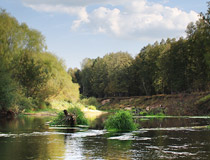 Small river in Mari El Author: Alex Grachov 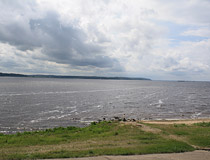 The Volga River in the Mari El Republic  Winter in Mari El Mari El - FeaturesMari El is located in the east of the East European Plain, in the middle reaches of the Volga River. Most of the territory of the republic is located on the left bank of the Volga. Gornomariysky district is situated on the right bank. The climate is temperate continental with long cold winters and warm summers. The average temperature in summer is about plus 18-20 degrees Celsius, in winter - about minus 18-19 degrees Celsius. The main natural resources are peat, clay, building stone, limestone, glass, silicate sands, mineral springs. Mari El is rich in lakes and coniferous forests. The main industries are machine-building and metal working, timber, wood processing, paper and pulp, light and food industries. Agriculture is presented by meat and milk producing, sheep, goat and pig breeding, poultry farming. Such crops barley, oats, rye, wheat and vegetables are grown. Yoshkar-Ola, with the population of about 279,400 people, is the largest city of the region. Also there are three towns: Volzhsk (51,900), Kozmodemyansk (19,700) and Zvenigovo (10,800). The national composition according to the 2010 Census: Russians (45.1%), Mari (41.8%), Tatars (5.5%). Today, only about 320,000 of Mari out of 670,000 live in the Republic of Mari El. National culture of the Mari region is rich and diverse. Mari El is connected by cultural and economic ties with other Finno-Ugric peoples of Hungary, Finland and the Baltic countries. The transport network of the republic is presented by all modes of transport: river (the Volga and Vetluga rivers with piers in Zvenigovo, Volzhsk, Kozmodemyansk, Yurino, Kokshaysk), air (the airport in Yoshkar-Ola offers regular flights to Moscow), rail (regular trains to Moscow), highways to Kazan and Cheboksary. Attractions of Mari ElThe Republic of Mari El is one of the most environmentally friendly regions in the European part of Russia. There are a lot of beautiful clean lakes, rivers and forests. It is a popular destination for travelers and tourists who enjoy nature. The Volga, the longest river in Europe, flows for 155 kilometers through the territory of Mari El. Kozmodemyansk, one of the oldest towns in the territory of the republic, stands on its banks. Kozmodemyansk museum complex includes: - Art and History Museum named after A.V. Grigoriev;
- Ethnographic Open-Air Museum - an exhibition showing the life and culture of the mountain Mari;
- Museum of Ostap Bender - installations and everyday objects one way or another related to the events of Ilf and Petrov’s novels “12 chairs” and “The Golden Calf”;
- Merchant Life Museum - the interior (furniture, household items) of a merchant’s house.
On the banks of the Volga you can also find the famous Sheremetev Castle (1874-1915). This palace and park ensemble, an architectural monument of federal importance, is located in the village of Yurino. Numerous lakes are one of the main natural resources of the Republic of Mari El. Many of them are surrounded by forests and very picturesque. Tourist park, sports camps, rest homes, and sanatoriums are located on their shores. Bolshaya Kokshaga Nature Reserve is known for its virgin forests and wildlife. The National Park “Mari Chodra” , located on Klenovaya (“Maple”) Mount, in the valley of the Ilet River, is an interesting natural complex offering various opportunities for boating, fishing, horseback riding, and mushrooming. On its territory you can find “Klenovaya Mountain” sanatorium, such popular tourist places as Zelenyy Klyuch source, the lakes of Yalchik, Mashiner, Glukhoye, Konaner, the rivers of Ilet, Yushut, Petyalka. The oldest oak tree in the republic known as the Pugachev’s Oak is situated here too. According to legend, E.I. Pugachev with his troops stayed the night in its shadow. Tours with recreational activities include water routes along the rivers of Malaya and Bolshaya Kokshaga, Bolshoy Kundysh, Ilet, Nemda, Volga; hiking and horseback riding in the south-western, southern and north-eastern parts of the republic; cycling and skiing throughout the entire region. Pilgrimage tours to holy places (monasteries, churches, sacred springs) and cult groves are also popular. Mari El republic of Russia photosThe mari el republic scenery.  Forest in Mari El 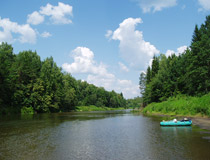 Small river in the Mari El Republic  Country life in Mari El Author: Sergey Kozin Mari El views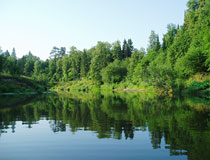 Summer in Mari El  Pine trees on the river bank in Mari El 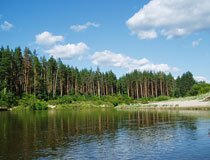 Pine forest in the Mari El Republic Pictures of the Republic of Mari El Mari El landscape 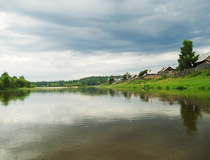 Mari El scenery 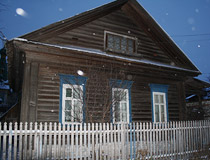 Wooden village house in Mari El Sheremetev Castle in Mari El  Sheremetev Castle in the Mari El Republic 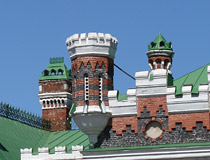 The questions of our visitorsThe comments of our visitors. Rating: 3.0 /5 (229 votes cast) Sponsored Links: | 



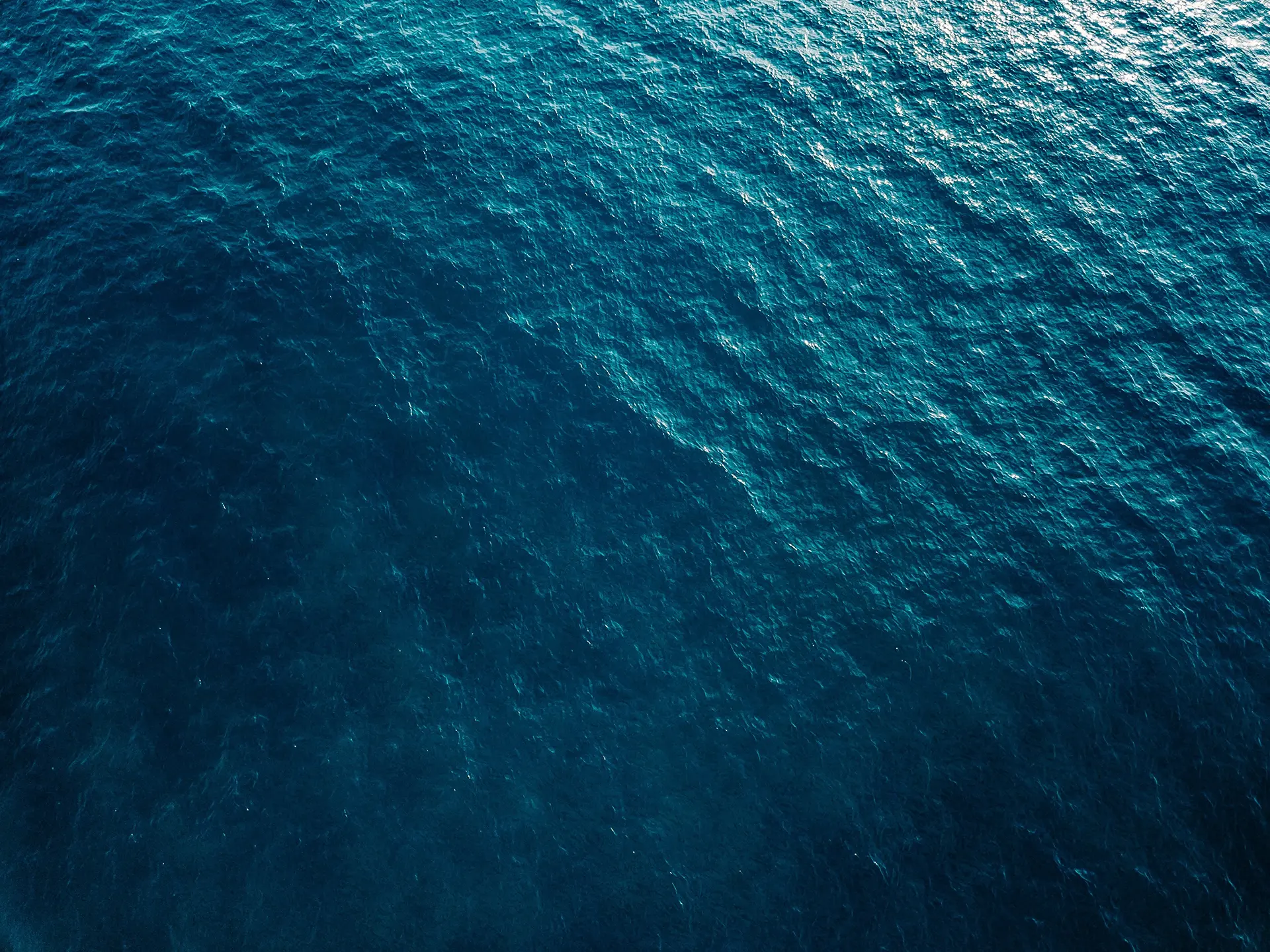

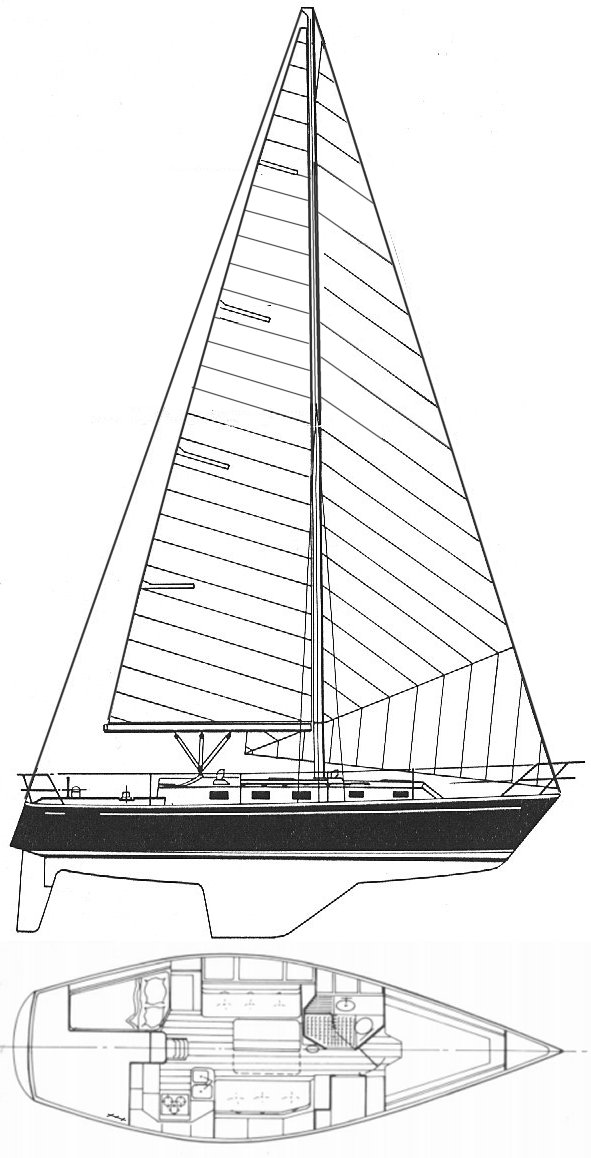


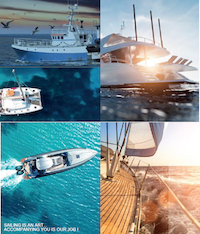






















IMAGES
VIDEO
COMMENTS
ENDEAVOUR 35. Save to Favorites . Beta Marine. BOTH. US IMPERIAL. METRIC. Sailboat Specifications Definitions Hull Type: Fin with rudder on skeg: Rigging Type: Masthead Sloop: LOA: 35.42 ft / 10.80 m ... Kelsall Sailing Performance (KSP): Another measure of relative speed potential of a boat. It takes into consideration "reported" sail area ...
According the the Endeavour 35 brochure, Kelley gave the boat the proportions necessary to be very fast upwind while retaining the room below to accomodate a comfortable layout. Note the focus on upwind performance which would have signaled a philsophical shift away from the heavy shoal draft cruising boats more suited to reaching conditions.
The immersion rate is defined as the weight required to sink the boat a certain level. The immersion rate for Endeavour 35 is about 223 kg/cm, alternatively 1251 lbs/inch. Meaning: if you load 223 kg cargo on the boat then it will sink 1 cm. Alternatively, if you load 1251 lbs cargo on the boat it will sink 1 inch.
John, We looked at and for an Endeavour 35 for the same purpose. Have since found a more suitable boat for us. After looking at 5 35's here are some things we learned in our search: - If any moisture gets into the Klegecell cored deck it causes larger than normal problems. And a repair shop familiar with this coring needs to be employed. All but one of the boats we looked at had problems.
Endeavour 35 is a 35′ 5″ / 10.8 m monohull sailboat designed by Bruce Kelley and built by Endeavour Yacht Corp. between 1983 and 1987. ... The lower a boat's ratio is, the less power it takes to drive the boat to its nominal hull speed or beyond. Read more. Formula. D/L = (D ÷ 2240) ÷ (0.01 x LWL)³ D: Displacement of the boat in pounds ...
1984 Endeavour 35.5 Sloop"Runaway" has benefited from numerous upgrades and is well equipped for cruising on the East Coast or Bahamas. Solid 1980's construction, roomy interior and good sailing performance at a very reasonable price. Brewer Yacht Sales is pleased to assist you in the purchase of this vessel.
Endeavour. Endeavour is a yacht brand that currently has 35 yachts for sale on YachtWorld, including 3 new vessels and 32 used yachts, listed by experienced yacht brokers and boat dealerships mainly in the following countries: United States and Mexico.
The Endeavour 35 is a 35.42ft masthead sloop designed by Bruce Kelley and built in fiberglass by Endeavour Yacht Corp. (USA) between 1983 and 1987. 300 units have been built. The Endeavour 35 is a moderate weight sailboat which is a good performer. It is very stable / stiff and has a low righting capability if capsized.
Endeavour 35 Sailboat Plan View and Interior Layout
Endeavour 35 A STATEMENT OF EXCELLENCE . INTERIOR he interior shown above combines all of our design aims pertaining to each area of the yacht. The head area sports a ... one quality sailboat that is still affordable. Endeavour Yacht Corporation 11700 So. Belcher Road Largo, Florida 33543 (813) 541-3553 .
Beautiful 1983 Endeavor 35 with custom sugar scoop. This is a turnkey blue-water / liveaboard cruiser. Comfortable accommodations to sleep 5. Custom transom arch with electronic davits. New 1000 watt solar panel system and 60A Renogy Rover MPPT charge controller with Bluetooth app for phone and Victron battery monitor.
1983 Endeavour 35 Sloop This Endeavour 35 Sloop is a Bruce Kelley designed vessel, hull # 133 out of 300 built that may well be the most spacious and comfortable 35 foot boat built. She performs very well to weather and can be easily single handed. She has a wide beam, beautiful teak interior, all the creature comforts for extended cruising.
LOA (Length Overall) 10.80 Meters / (35 feet and 5 inch) L.W.L(Length WaterLine) 8.99 Meters / (29 feet and 6 inch) Parts And Accessories: Endeavour 35 Parts
Endeavor Victory 35 Catamaran For Sale By Owner Location: Freeport, NY Asking: $85,000 (USD) S/V DZIKA is a Atlantic based 1998 Endeavour 35 Victory catamaran for sale by owner.35′ Catamaran that has lots of great features. Easy to live on and sail. This boat does need a little TLC, but much more than just the bones are great on this boat.
2001 35' Endeavour Catamaran Corporation Victory 35 Sailing Catamaran sailboat for sale in Ft Myers Florida. Home. ... Draft. Location. Price. 2001. 35' 16' 3.5' Florida. $149,500. Description: This 2001 Endeavour Sailing Catamaran is fully equipped, and turn-key ready for your next great adventure! This beautiful catamaran received a full 10 ...
Data And technical specifications of Endeavour 35.5 equipments, fuel economy, dimensions, weight, engine power and prices . Sea Ray ... 35.5 specifications; 1985 Endeavour 35.5 Technical Specs. General Data about Endeavour 35.5. Brand: Endeavour: Model: 35.5: Boat Type: Sail: Category: Sloop: Year Of Production: 1985: Condition (New/Used) Pre ...
Yoshkar-Ola was established as a military fortress in 1584, following the Russian conquest of the Mari region.Yoshkar-Ola means "red city" in Mari and before 1919 was known as Tsaryovokokshaysk (Царевококшайск), between 1919 and 1927 also as Krasnokokshaysk (Краснококшайск) both after the Malaya Kokshaga River and is known as Charla (Чарла) amongst the Mari ...
Sergeev vs. Kokorev at Mari El Open Cup 2017 on Tapology. View Sergeev vs. Kokorev fight video, highlights, news, Twitter updates, and fight results.
The Mari El Republic - Overview. The Republic of Mari El is a federal subject of Russia located in the east of the European part of the country, in the Volga Federal District. Yoshkar-Ola is the capital city of the region. The population of Mari El is about 671,400 (2022), the area - 23,375 sq. km.
Al Sole, Yoshkar-Ola: See 24 unbiased reviews of Al Sole, rated 4.5 of 5 on Tripadvisor and ranked #18 of 162 restaurants in Yoshkar-Ola.